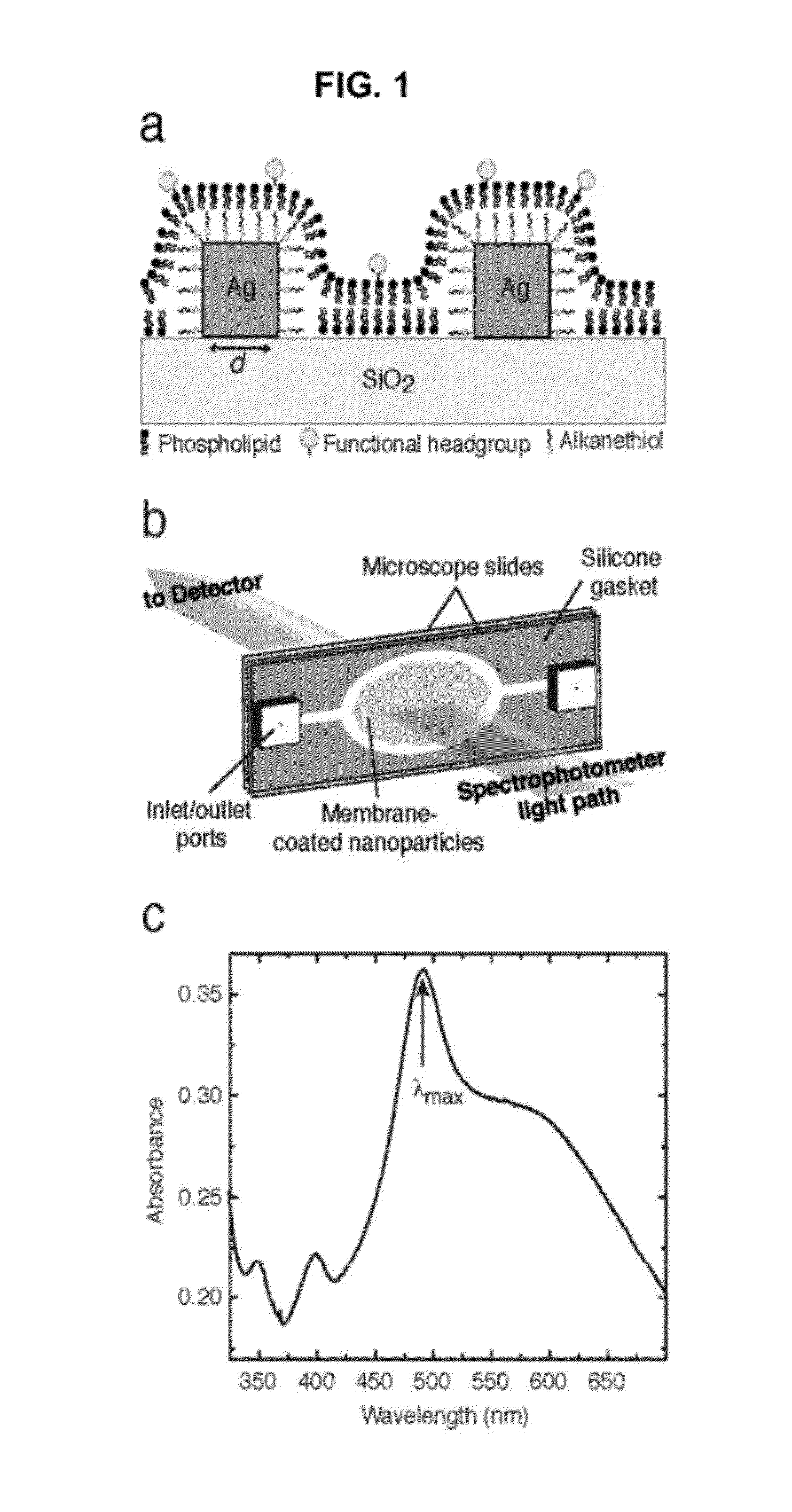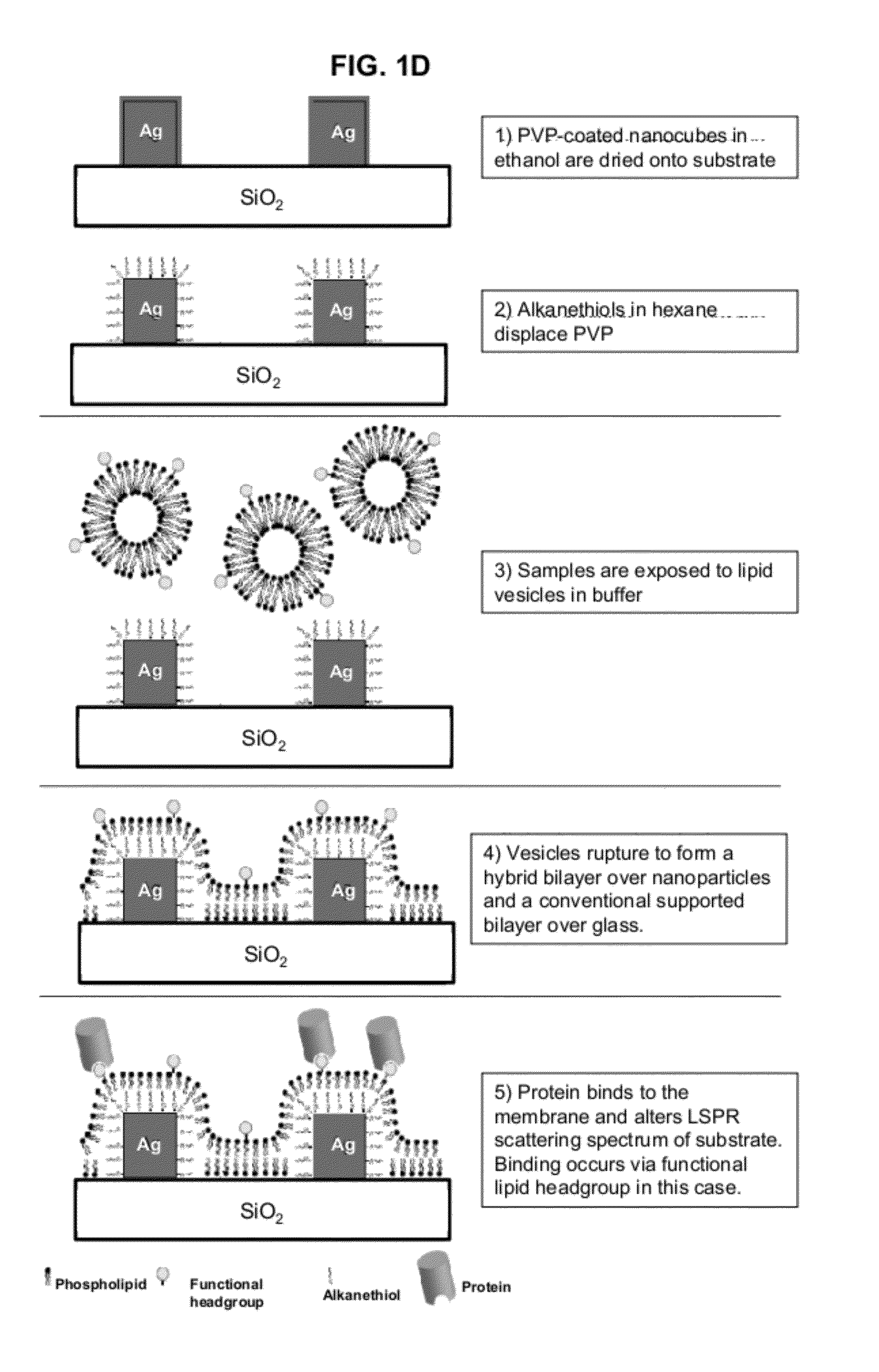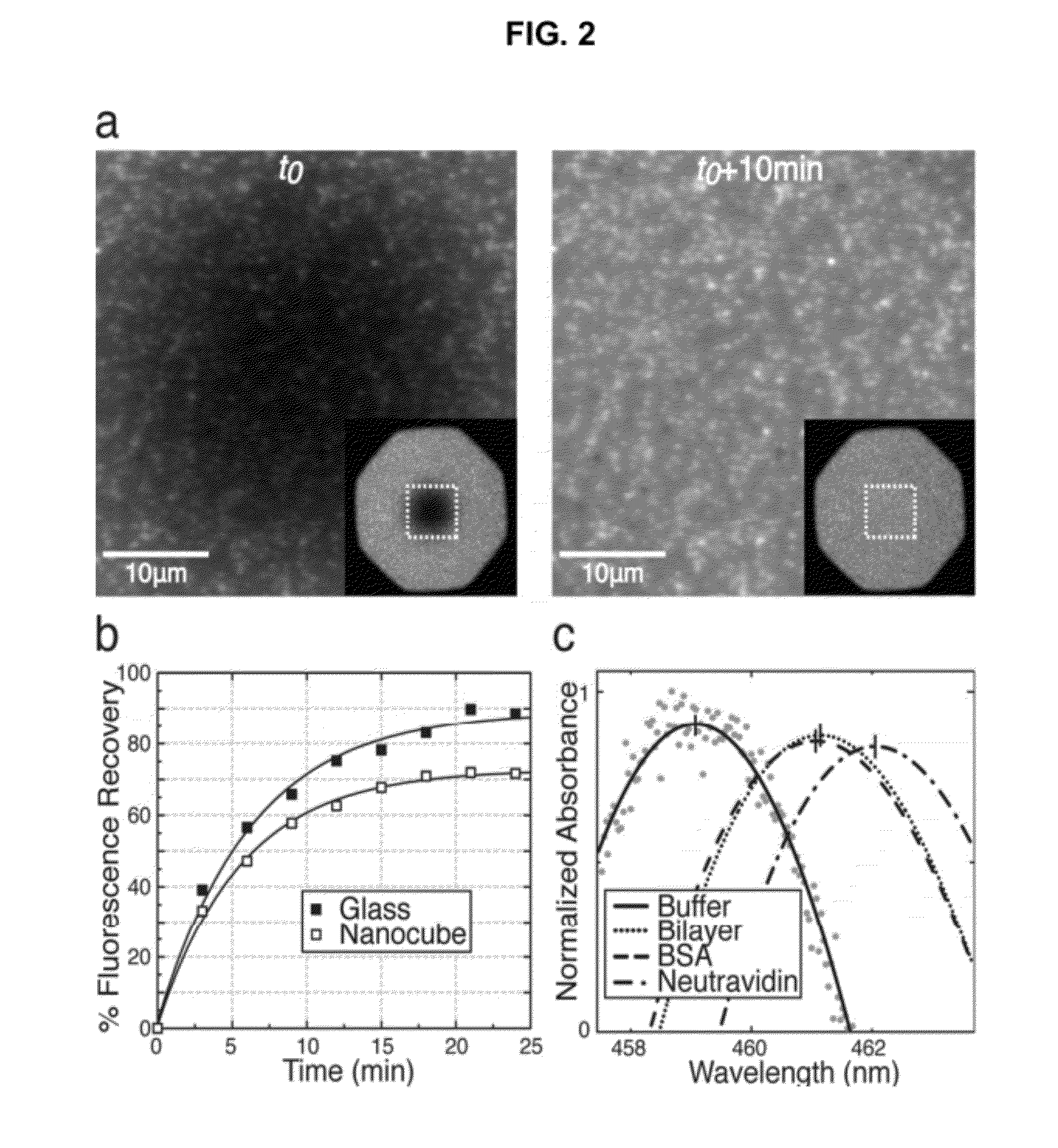Plasmonic System for Detecting Binding of Biological Molecules
a plasmonic system and molecular technology, applied in the field of surface plasmonic sensing compositions, methods and devices for the detection of molecular binding on membrane surfaces, can solve the problems of no commercial platform that provides a way to screen these kinds of interactions in a phospholipid membrane environment, and the difficulty of working with membrane proteins outside of the membrane environment, etc., to achieve the effect of simple fabrication and readout, and easy parallelization
- Summary
- Abstract
- Description
- Claims
- Application Information
AI Technical Summary
Benefits of technology
Problems solved by technology
Method used
Image
Examples
example 1
A Nanocube-Plasmonic Sensor
[0090]A multiplexable, label-free sensor device to measure interfacial binding of an analyte at a phospholipid membrane surface was made comprising a glass slide with a randomly ordered array of ˜100 nm wide silver nanocubes{Tao:2006,Tao:2007} (at ˜10-100 cubes / μm2 density), coated by a hybrid lipid bilayer and surrounded by a normal lipid bilayer surface (see FIG. 1). The silver nanocubes are made according to the methods described in A. Tao, P. Sinsermsuksakul, and P. Yang. Tunable plasmonic lattices of silver nanocrystals. Nature Nanotechnology, 2(7):435-440, July 2007, and] A. Tao, P. Sinsermsuksakul, and P. D. Yang. Polyhedral silver nanocrystals with distinct scattering signatures. Angewandte Chemie-International Edition, 45(28):4597-4601, 2006, both of which are hereby incorporated by reference for all purposes. The lipids themselves, or biomolecules embedded into the bilayers, determine the analyte specificity of the device. Binding occurs either t...
example 2
Detecting Molecular Binding with a Nanocube-Plasmonic Sensor
[0098]The nanocubes are seen clearly in fluorescence microscopy images as objects that appear brighter than the surrounding fluorescent supported bilayer (FIG. 2a). There are several potential causes for the high relative fluorescence intensity. Nanocubes provide an excess of local surface area compared to the flat substrate. However, the nanocubes are approximately 4-fold brighter than would be expected based purely on the geometry of a monolayer-coated 100 nm cube (see FIG. 9). One explanation for this is that it is possible for fluorophores to energetically couple to nearby plasmonic fields, resulting in a localized enhancement of fluorescence intensity, even for fluorophores without good spectral overlap between their excitation spectrum and the plasmonic scattering profile[Haes, A.; Zou, S.; Zhao, J.; Schatz, G.; VanDuyne, R. Journal of the American Chemical Society 2006, 128, 10905-10914; Zhang, J.; Fu, Y.; Chowdhury,...
example 3
Sensitivity of Nanocube-Plasmonic Sensor
[0107]An estimate of sensor noise is found by considering data from the negative control bilayer (without DOGS-NTA-Ni), shown in FIG. 3 (open squares), where protein binding to the membrane does not occur. The first sixty measurements have a standard deviation of 0.02 nm, which corresponds to a mass density of 1.5 ng cm−2 by applying the sensitivity of 170 nm cm2 ng−1. This also results in a calculated limit of detection (3× noise)[Homola, J. Chemical Reviews 2008, 108, 462-493] of 4.5 ng cm−2. The 0.02 nm value also provides an upper limit to the noise of the polynomial peak fitting method described above—the true resolution is likely much finer. While the limit of detection of supported bilayers formed in microfabricated nanoscale holes in metal films on glass is reported to be 0.1 ng cm−2 [Dahlin, A. B.; Tegenfeldt, J. O.; Hook, F. Analytical Chemistry 2006, 78, 4416-4423], the numbers quoted for the nanocube membrane sensor here represent ...
PUM
 Login to View More
Login to View More Abstract
Description
Claims
Application Information
 Login to View More
Login to View More - R&D
- Intellectual Property
- Life Sciences
- Materials
- Tech Scout
- Unparalleled Data Quality
- Higher Quality Content
- 60% Fewer Hallucinations
Browse by: Latest US Patents, China's latest patents, Technical Efficacy Thesaurus, Application Domain, Technology Topic, Popular Technical Reports.
© 2025 PatSnap. All rights reserved.Legal|Privacy policy|Modern Slavery Act Transparency Statement|Sitemap|About US| Contact US: help@patsnap.com



